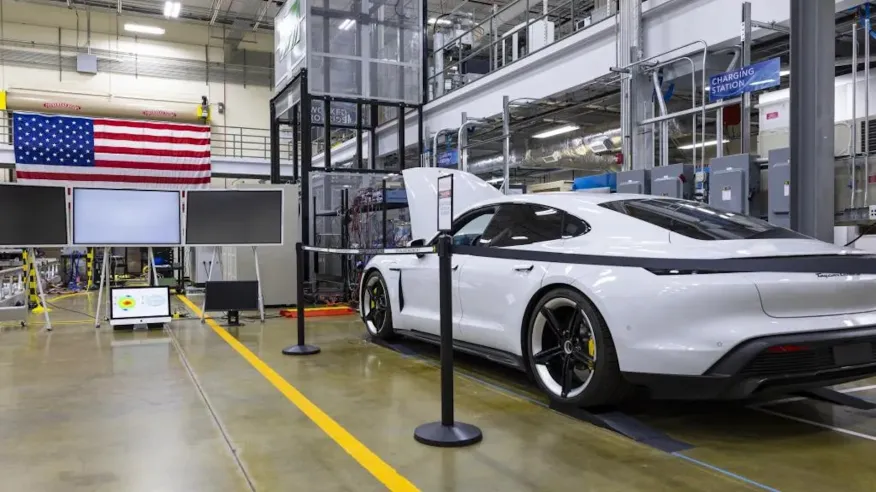In a world where convenience and efficiency are king, wireless EV charging is making waves with the promise of reshaping how we power our vehicles. Imagine pulling up to a parking spot and charging your electric vehicle without ever having to plug in. This futuristic scenario is becoming a reality, with advancements in wireless EV charging technology poised to revolutionize urban mobility. In this article, we will explore how this cutting-edge technology works, its benefits, and its potential impact on our daily commutes and city infrastructures.
What is Wireless EV Charging?
Wireless EV charging, also known as inductive charging, is a method of charging electric vehicles (EVs) without the need for physical connectors. Using electromagnetic fields to transfer energy from a transmitter pad installed on the ground to a receiver pad fitted to the vehicle, this technology eliminates the hassle of cables and plugs. Here’s how it works:
- Electromagnetic Induction: A transmitter coil generates an alternating electromagnetic field, which is picked up by a receiver coil in the EV.
- Energy Transfer: Through resonant inductive coupling, energy is efficiently transferred from the grid to the vehicle’s battery.
- Automatic Alignment: Advanced systems ensure precise alignment between the vehicle and the charging pad, optimizing energy transfer.
Benefits of Wireless Charging in Urban Areas
The benefits of wireless EV charging are particularly compelling for urban environments:
- Convenience and Ease of Use: No more fumbling with cables. Simply park your car, and charging begins automatically.
- Reduced Infrastructure Clutter: Unlike traditional charging stations, wireless systems reduce the visual pollution of cables and connectors.
- Enhanced Safety: Eliminating physical connections leads to fewer hazards associated with wear and tear or vandalism.
- Scalability: Easy integration into existing parking lots and roads makes it ideal for urban expansion.
Wireless EV Charging: Current Developments and Future Trends
Global Progress in Wireless Charging Technology
Several companies and research institutions are driving the progress of wireless EV charging. In 2023, Electreon and WiTricity have been at the forefront, with successful pilot programs in Europe and the United States. Electreon’s projects in Sweden and Germany demonstrate the feasibility of dynamic charging, where vehicles charge while on the move.
- Electreon in Sweden: A 1.6 km stretch of electrified road allows buses and trucks to charge dynamically, reducing downtime.
- WiTricity in the USA: Collaborations with auto giants like Nissan and Hyundai are accelerating the adoption of static wireless charging systems.
Challenges and Solutions
While promising, wireless EV charging faces hurdles such as cost, efficiency, and standardization. However, ongoing research and development are paving the way for solutions:
- Cost Reduction: Advances in coil design and materials are reducing the cost of production and installation.
- Efficiency Improvements: Innovations in resonant frequency tuning and energy management are enhancing charging speeds and reducing energy loss.
- Standardization Efforts: Organizations like SAE International are working to establish global standards, ensuring compatibility across different manufacturers and regions.
Practical Guide: How to Use Wireless EV Charging
For those eager to embrace this technology, here’s a practical guide to integrating wireless EV charging into your routine:
Steps to Charge Your EV Wirelessly
- Check Compatibility: Ensure your EV is equipped with wireless charging capabilities or can be retrofitted with a receiver pad.
- Locate a Charging Spot: Use apps like PlugShare or ChargePoint to find wireless charging-enabled locations.
- Park and Align: Follow the guidance system to align your vehicle with the charging pad.
- Monitor Charging: Use your vehicle’s app or dashboard to monitor charging progress and estimated completion time.
Where to Buy and Install Wireless Charging Systems
Currently, wireless charging systems are primarily available through select manufacturers and pilot programs. As adoption grows, expect more widespread availability in the following places:
- Automotive Dealerships: Brands like Hyundai and Nissan offer wireless charging options for certain models.
- Aftermarket Providers: Companies like WiTricity offer retrofitting kits for existing vehicles.
- Public Infrastructure: Municipal initiatives in cities like Oslo and Los Angeles are expanding public wireless charging infrastructure.
Conclusion: The Future of Urban Mobility
In conclusion, wireless EV charging is not just a technological advancement; it’s a transformative shift in how we approach urban mobility. With key benefits like convenience, safety, and reduced infrastructure footprint, it addresses many challenges faced by urban planners today. As we look to the future, the integration of wireless charging into smart city designs holds the potential to significantly enhance the efficiency and sustainability of urban transportation.
As you consider your next vehicle purchase or urban development project, keep an eye on the evolving landscape of wireless EV charging. Are you ready to embrace the convenience and innovation of this technology? Join the conversation and share your thoughts on how wireless charging could impact your daily life and city infrastructure.
Call to Action
Stay informed on the latest electric vehicle technologies and trends by subscribing to our newsletter. Follow us on social media for more insights into the future of mobility. Together, let’s drive towards a cleaner, smarter, and more connected urban environment.

